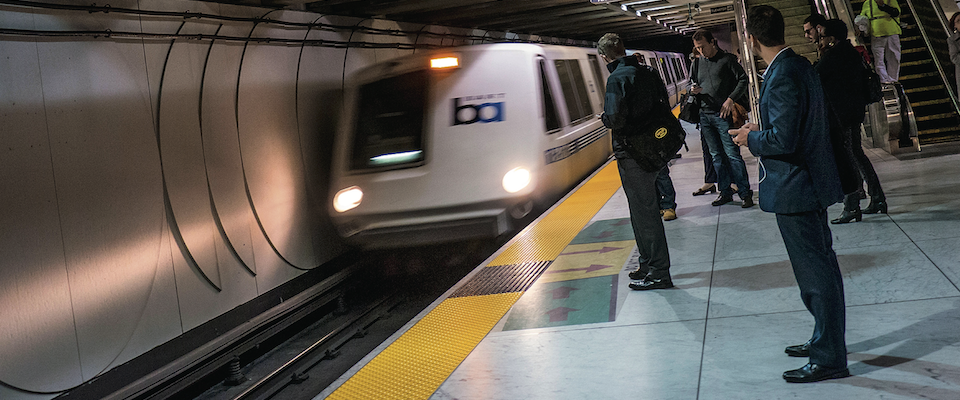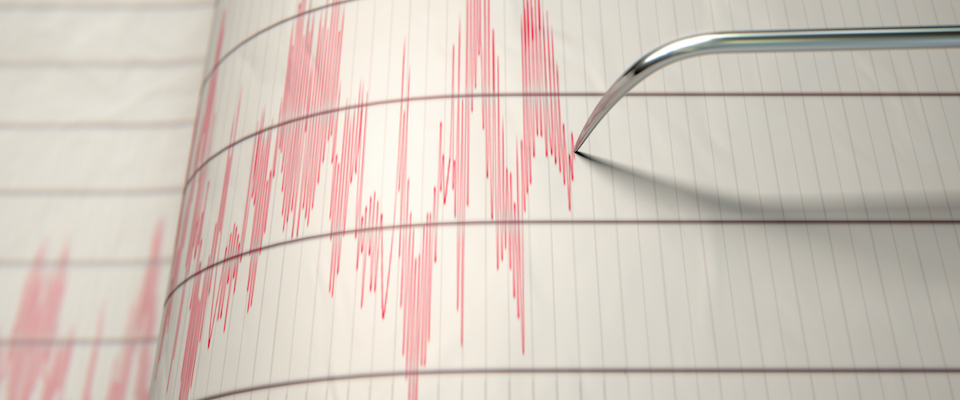Early earthquake warnings come to California.
This fall, the Seismology Lab at UC Berkeley launched ShakeAlert 2.0, California’s first earthquake early warning (EEW) system. It employs a West Coast–wide network of sensors to detect the quakes before they hit, in hopes of spreading the word as far and wide as possible.
On October 8, just ten days before the Great California Shakeout, BART held a demonstration of the system. In response to an early alert, a train automatically slowed to 20 mph, preventing possible derailment and injury. In Los Angeles City Hall, the mayor received a hypothetical notice from ShakeAlert and sounded an alarm calling for everyone in earshot to “drop, cover, and hold on.”
Although the test was successful, Richard Allen, Director of the Seismology Lab, stresses that the work isn’t finished. “We’ve been working on getting ShakeAlert out there for over a decade,” Allen says. “It’ll be done when everyone gets the warning on their phone, and we’re not there yet.”

Even when the system’s up and running, don’t expect a lot of warning. Depending on how close you are to the epicenter of an earthquake, an alert may arrive anywhere from a few seconds to a full minute before the shaking starts.
Even such a brief warning can be consequential, however. In the Loma Prieta and Northridge earthquakes, more than half of all of injuries were caused by things falling on people or vice versa. Allen noted that if everyone received a warning and took cover beneath a sturdy table, the number of earthquake injuries could be reduced by 50 percent, potentially saving billions in hospital costs.
California is lagging in this kind of technology. Both Mexico and Japan have had well-developed EEW systems for more than a decade. So what’s the hold-up here? It’s partly because of geography, Allen explains. In Mexico and Japan, earthquakes are caused by tectonic activity offshore and underwater, but in California, fault lines run directly beneath high-density cities, making adequate warning more difficult. The Hayward Fault bisects the East Bay, and the San Andreas fault lies just east of Los Angeles.
Of course, these fault-straddling and fault-adjacent metropolises are anticipating (and by some estimates, overdue for) the next “Big One,” which makes getting a fully operational earthquake warning system in place especially urgent.
Want to Help?
The rollout of ShakeAlert 2.0 has been possible thanks to the installation of nearly 70 earthquake sensor stations, mostly in the Bay Area and Los Angeles. Allen and his team are now planning to install 90 more to improve the network’s reach and accuracy. To do this, the Lab is seeking private landowners in other parts of the state who would be interested in having one installed on their property. The station is about the size of a small garden shed, just big enough to host a couple of computers, a few batteries, and an underground seismometer. Once installed, the stations are low-maintenance. If interested, visit the Berkeley Seismology Lab here.





















